Whether you’re a tourist, visiting business person or recently arrived expat, I hope this subjectively-prioritized list of contemporary art museums in Shanghai inspires you to further enjoy one of the greatest cities on earth!
Not covered here are first tier city museums like Shanghai Museum or her Urban Planning Centre. Also not included are private art galleries, such as those gathered at M50, or museums covering other cultural areas like, for example, the brilliant Museum of Cultural Revolution posters or of the founding of the communist party in Xintiandi. You should definitely check these out too when you have a moment.
Now, on to the museums…
1) Long Museum (West Bund)
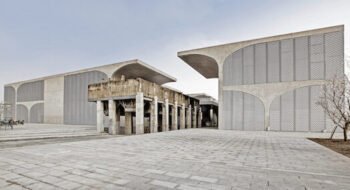
When it opened in 2012, the Long Museum Pudong was the largest private museum in China, founded by billionaire investor Liu Yiqian and his wife Wang Wei. Situated at a former coal-loading wharf by the Yangzi river, this museum of reinforced concrete uses industrial architecture in an impressive, utilitarian avant-garde design. This is one of three museums to feature one of the most important private Chinese art collections in the world. Although it is weighted towards and more celebrated for its contemporary works, the couple have also invested heavily at auction in pieces from Imperial and Republican eras, for example paying nearly $40 million for a tiny Ming dynasty “chicken cup” and controversially immediately celebrating the purchase by drinking tea from it! This building is comprised of several exhibition spaces. Although the previously excellent “permanent exhibition” (moved during Covid) is currently absent, the quality of art shown in this museum is always worthy of attention.
Address: 3398 Longteng Avenue, Xuhui District, Shanghai, Long Museum (West Bund)
Chinese Address: 上海市徐汇区龙腾大道 3398 号龙美术馆(西岸馆)
Web URL: http://www.thelongmuseum.org/en/
Adult ticket price: 320RMB
Closed Monday
2) Power Station of Art
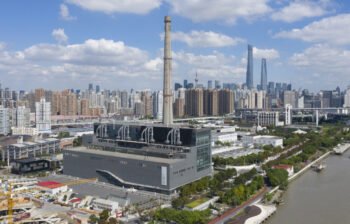
This is the most politically influential contemporary art museum in the city and possibly the country. Owned by the municipality of Shanghai, the state-run Shanghai Contemporary Art Museum, as it is known in Chinese, is the official host of the prestigious Shanghai Biennale. Housed in what was formerly the coal-fired Nansha electricity generation plant, the massive 41,000 m2 (410,000 square feet) space was converted into the Pavilion of the Future for the 2010 Shanghai Expo and two years after was re-purposed to house China’s first public contemporary art museum. There is no permanent exhibition – at any time you will find a number of high-quality temporary exhibitions of notable variety.
This museum is right beside the Team Labs exhibition space and so it would make sense to combine the two in a visit to this area.
Address: 678 Miaojiang Road, Huangpu District, Shanghai, 200011, Power Station of Art
Chinese Address: 海市黄浦区苗江路号上海当代艺术博物馆
Web URL: https://www.powerstationofart.com/whats-on
Adult ticket price: Exhibitions priced variously from 0 – ~100RMB
Closed Monday
3) China Art Museum
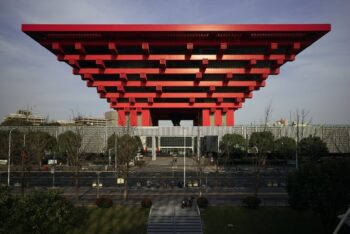
One of the most famous paintings in Chinese art history is the twelfth century “Along the River during Qing Ming festival” (清明上河圖), painted by Zhang Zeduan. This has been called China’s “Mona Lisa” to give you an idea of its importance. 25 cm (10 inches) high and 5.25m (17’) long, it features scenes by the Bian River in the then capital of China, Kaifeng. In scroll format, it reveals life in both rural and urban China at all levels of society. You can see it online here.
Whilst the original is in the Palace Museum in Beijing, the authorities were inspired by the towering historical grandeur of this piece when they sought to anchor The China Art Museum with a suitably impressive work of contemporary art. That is because this architecturally stunning museum, which you can view here, was launched as the iconic monument of the 2010 Shanghai Expo, which following on from the 2008 Beijing Olympics, became Shanghai’s calling card to global relevance in the new millennium.
What you can see here today is a 3D animated version of the classic scroll painting. Called “River of Wisdom”, 128 m long (420’) and 6.5 m (21’) high, this amazing computer graphic with moving figures brings to life the entire scene in 4-minute day and night cycles. If you have even the most fragmentary art history bone in your body, you will be fascinated by it, but please note that other than this exhibit, there’s little reason to inspect the contents of this museum.
Address:205 Shanghai Road, Pudong Xin Qu, Shanghai. China Art Museum
Chinese Address: 上海市浦东新区上南路205号中华艺术宫
Web URL: https://www.artmuseumonline.org/art/art/index.html#page1/1
Adult ticket price: Free admission to permanent exhibition, 20RMB for special exhibition
Closed Monday
4) Museum of Art Pudong
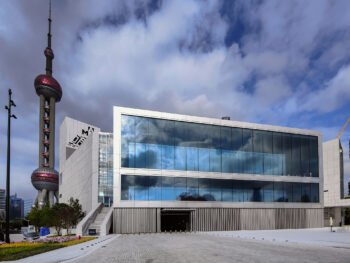
Owned by Lujiazui Group, a state-funded real estate company, primarily tasked with developing key aspects of the Pudong waterfront, the Pudong Art Museum is a 40,000 square meter space devoted to prominent temporary exhibitions in the heart of the city. Located beside the Oriental Pearl Television tower at the tip of the bend in the Yangzi river opposite the British-developed Bund embankment, this museum provides a cultural anchor for what is now probably the world’s most desirable real estate. The 13 galleries, designed by Pritzker winning French architect, Jean Nouvel, are so designed to accommodate both massive installations and the typical maze of whitewashed walls you’d typically expect to find. Also significant are the two glass fronted walkways looking onto the Bund as well as the magnificent views from the roof restaurant and terrace beside it. You should expect to find high quality exhibitions here whenever you visit – for example at the time of writing, the photographic works of Lin Heung Shing, spanning half a century of Chinese history, were featured beside a retrospective of Zeng Fanzhi, one of China’s best known contemporary artists, as well as a fabulous installation by Xu Bing.
Address: The Museum of Art Pudong , No.2777 Binjiang Avenue, Pudong New Area, Shanghai
Chinese Address: 上海市浦东新区滨江大道2777号浦东美术馆
Web URL: https://www.museumofartpd.org.cn/en/index
Adult ticket price: 200 RMB (weekend ticket)
Closed Tuesday
5) Yuz Museum
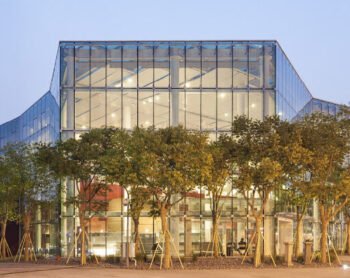
Mr Budi Tek, who passed away in 2022, was one of several successful Indonesian-Chinese entrepreneurs to invest in contemporary Chinese art during its recent rise to prominence. His particular penchant was for installation art, especially very large pieces. His beautiful museum, built on the site of a former hangar of Longhua airport, now houses a portion of his impressive collection as well as offering temporary exhibitions to established artists. It is well worth a visit as part of your investigation of the West Bund area.
Address: No.8, Lane 123, Panding Road, Qingpu District, Shanghai, Yuz Museum
Chinese Address: 上海市青浦区蟠鼎路123弄8号余德耀美术馆
Web URL: http://www.yuzmshanghai.org/?lang=en
Adult ticket price: 140RMB
Closed Monday
6) Team Labs
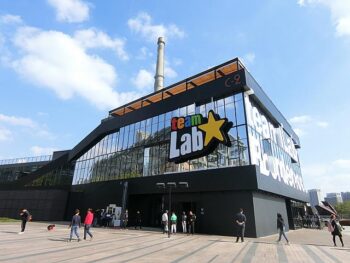
The absolutely spectacular international digital art collective, founded in Japan in 2001, offers a wonderfully immersive 3D digital display at the Epsom Team labs venue close to the Powerstation of Art in the West Bund area in Shanghai. If you have seen one of these before, then this won’t be quite so fabulous, but if you’re a first-timer, this is a must-see.
Address: Unit C-2 No 100, Huayuangang Lu, Huangpu, Shanghai , Team Labs
Chinese Address: 上海市黄浦区花园港路100号C-2馆无界美术馆
Web URL: https://www.teamlab.art/e/borderless-shanghai/
Adult ticket price: 249RMB (for weekend or weekday entry)
7) Fosun Foundation
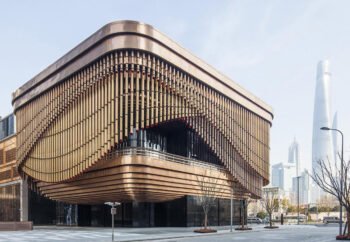
This exhibition space is prominent thanks to the kinetic installation around the museum building. Designed by Brit, Thomas Heatherwick, who created a sensation with the UK Pavilion at the Shanghai Expo and more recently with the 1000 Trees development near the M50 galleries, the perimeter of the museum roof is circled by three layers of bronze tubes of varying lengths hanging down from rails. At regular times of the day, the tubes that resemble waves of bamboo trunks or inverted organ pipes move around the building, revealing a terrace or stage within. Located within the Bund Financial Centre, a smart (in both senses) real estate development, the Fosun Foundation becomes a destination in its own right even without the benefit of the temporary exhibitions it regularly features. The quality of the exhibitions (and the ticket prices) vary from good to excellent, but really both the exterior of the Foundation and the development it introduces are worth a trip in themselves.
Guo Guangchang and his Fosun Group are worthy of a short word. In brief, five young graduates from Fudan University, one of China’s finest, clubbed together in 1992 to start an investment company. Here we are thirty-five years later and it’s one of the largest conglomerates in the world, owning amongst other assets Wolverhampton Wanderers FC, a Premier League football club (soccer), Thomas Cook, the venerable travel firm and Club Med. Congrats to them!
Address: Fosun Foundation, Bund Finance Centre, 600, Zhongshan East 2nd Road Shanghai 200010
Chinese Address: 上海市黄浦区中山东二路600 号200010复星艺术中心
Web URL: https://www.fosunfoundation.com/en/
Adult ticket price: 40 – 300RMB according to exhibition
Closed Monday except public holidays
8) West Bund Project (Pompidou)
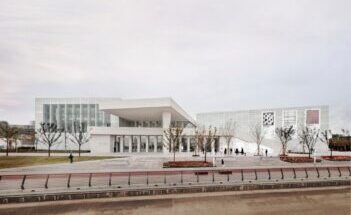
Whilst the David Chipperfield-designed West Bund Museum is one of the city’s most prominent new museums, its politically-inspired ten-year relationship with the Georges Pompidou Centre means that it more naturally commands the attention of local Chinese interested in traveling exhibitions of French art than visiting foreigners investigating local Chinese talent.
“Mirrors of the Portrait. Highlights of the Centre Pompidou collection” is the third and current semi-permanent exhibition from the famed Parisian collection. This will run from July 2023 to November 2024, to be replaced by other differently-themed collections from the same European museum. Reflecting the museum’s dual role also reflecting Chinese art’s role on the global stage, a secondary concurrent exhibition typically extols the merits of a local artist. In addition, the museum features other temporary exhibitions, details of which can be accessed on its website.
Address: No.2600 Longteng Avenue, Xuihui District, Shanghai, West Bund Museum
Chinese Address: 上海市徐汇区龙腾大道2600号西岸美术馆
Web URL: https://www.wbmshanghai.com/en/
Adult ticket price: 100RMB for Pompidou exhibition, 200RMB for all exhibitions
Closed Monday
The glittering J Hotel, housed atop China’s tallest building, The Shanghai Center, the third tallest in the world, curvaceously soars 128 floors over the world’s most stunningly glorious futuristic cityscape in an opulently Las Vegas-inspired flight of fancy. With a Shanghainese restaurant on the 120th floor, it’s currently the world’s highest hotel. Indeed, it’s a hotel of China luxury travel superlatives, whether you count the tiles of the Italian mosaic walls in its presidential Shanghai Suite, the sparkling prismatic refractions of French and Chinese crystal in its glass-faced bedrooms, the numerous international and Chinese works of art sprinkled throughout the public areas or, more blandly, the sheer financial cost of this absolutely gorgeously designed skyscraper. It’s also a story of firsts. Though they are the owners of many fine heritage hotels in the city, such as the Peace, Park, Metropole and Jinjiang Hotels, this is the first time the Jinjiang group is attempting to manage a first-tier luxury hotel. This is also the first time, the world has heard of the new “J Hotel” (J for Jinjiang). And whilst, there are various mainland Chinese-owned and managed five-star hotels, this is the first time a mainland Chinese brand, private or public, is asking to be judged as best in class at the luxury level anywhere in the world (as defined by consistently justifying highest city ADR).
To lead the charge, they have employed a veteran China hand, Richard Yap from Singapore. He has an extensive resume incorporating western luxury brands from Aman to Raffles along with mainland Chinese ones such as the Beijing Commune. He knows the standards expected of top tier luxury China hotels and has the local experience necessary to work within a local work style and management structure. Aware that he needs to achieve exemplary service levels, he has convinced his task masters to invest in a team of well-trained butlers. These are to coordinate service delivery between the various hotel functions to demanding guests, both domestic and international. Of course, because of Covid, so far most hotel users have been mainland Chinese. Like many China luxury hoteliers, Richard is keen to have the opportunity to take his staff and property to new heights by excelling with a smorgasbord of nationalities. He commented – “western and Chinese guests focus on different parts of the hotel experience, and we want to be able to cater to both”.
Jinjiang International Holdings is the largest travel conglomerate you have never heard of. With significant shareholdings in a number of major hotel groups such as Accor, Radisson and Louvre Hotels, as well as Shanghai Disneyland, this aggregation of four listed state-owned companies manages over 7,700 hotels in 67 countries, a fleet of 10,000 vehicles and is a major outbound tour operator. It is the fifth largest hotel group in the world, and J Hotel is its calling card.
Occupying the 84th to 120th floor of the Shanghai Center, J Hotel features 165 bedrooms including 34 suites. It peers down at the neighboring 101 floor Park Hyatt and the stunning 88 floor Grand Hyatt beneath, themselves the third and sixth highest hotels in the world, creating between them an iconic architectural triptych that has come to define the Liujiazui skyline as distinctly as the Peace Hotel and HSBC building define the early twentieth century Bund across the river.
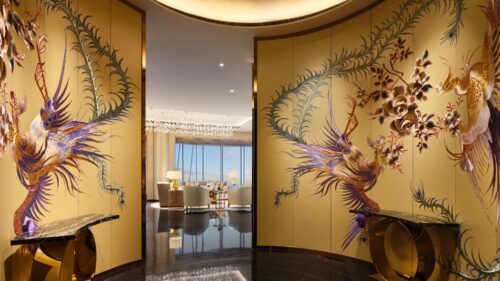
Imagine the “Contemporary” guestroom as a crystal box suspended in a glass skyscraper. 610 square feet (61 sq m) large, the space is sectioned with movable semi-transparent screens into dressing, sleeping and washing areas. Laminated glass with a magnolia pattern contains the white marble-floored bathing area. The chief decoration in the sitting area is an Italian crystal display case featuring Lalique and Chinese glassware with some Tang-dynasty inspired ceramics. A more recent selection of guest rooms are styled as “New Chinese” – the key differences being a more typical and firmer division between bathroom and bedroom areas and more traditional Chinese decoration such as a wooden tea table and gold-accented sofa. The suites, starting from 1,000 square feet (100 sq m), echo the Contemporary style. Their apotheosis comes in the extravagance of the Shanghai Suite – highlights include two large embroidered phoenixes from Suzhou in the round entry vestibule, a crystal structured four poster bed and a yinyang double sink in the bathroom, whose walls are covered in incredible mosaics, reminiscent of the 120th floor Shanghainese restaurant. The flamboyance of this suite is uncharacteristic of the conservativeness associated with East Asian business culture, but typical of the adventurousness that drives it.
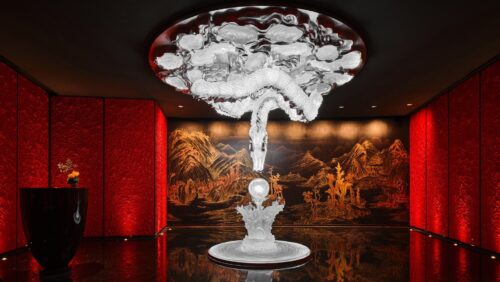
Although it’s hard to decide, to my mind the most stunning area of this incredibly ambitious hotel is in the Cantonese restaurant – “Jin Yan”. One passes through a red glass “Shikumen style” gate into a dark, black-marbled corridor at the end of which coiling down from the ceiling towards a pearl beneath is an illuminated pale blue Chinese dragon. As this is reflected in the black marble floor, we in fact see two dragons fighting over a pearl between them, a traditional Imperial motif that you will also see frequently in the Forbidden City. If this is not magnificent enough, the private dining rooms, styled around the colors of the traditional, five Chinese elements offer their own artistic apotheoses. One dining room’s ceiling is entirely decorated in spirals of dark blue crystal peacock feathers; another features illuminated white crystal clouds. Really, each room belongs in a museum. And all of it overlooks a vast city panorama in which fifty story buildings appear as inconsequential grey stumps of uncouth concrete in the lowly distance.
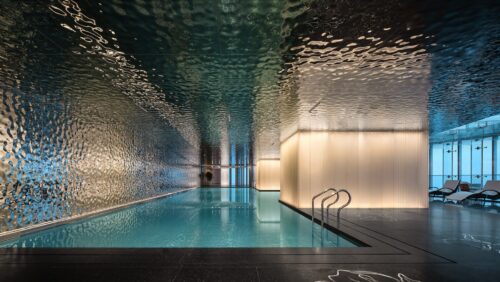
Although the gym on the 85th floor is spacious and admirably well-equipped and the view up to the roof from the swimming pool on the 84th floor in the outer shell of the skyscraper gives an amazing perspective, I do have two criticisms of the hotel in this area. The first is that the exercise and swimming area do not include a steam or dry sauna amongst their facilities. (That said, some of the suites do come with their own individual dry saunas.) The second is the stubborn insistence of Shanghai city government that hotel residents wear swimming caps in the city’s swimming pools. This outmoded regulation is rarely enforced at luxury hotels in other cities in China, and I suggest firstly that Shanghai be advised to phase it out and secondly and more controversially that J Hotel be encouraged not to enforce it.
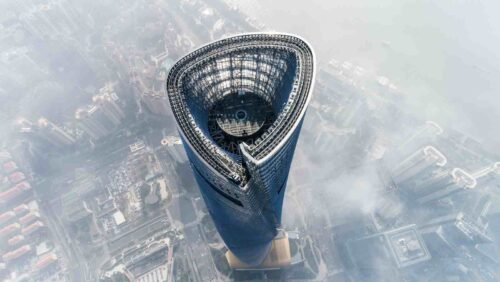
Although a hotel guest is bound to find a satisfying morsel to eat at one of the Italian (101st floor), Shanghainese (120th floor), Cantonese (103rd floor) or Japanese (104th floor) restaurants, it would be criminal not to mention the wonderful tea/light dinner service that is available to all hotel residents every day at the Yi Lounge on the 84th floor on a complimentary basis. My son and wife had a marvelous time enjoying its tasty delicacies, perhaps only matched by the pastries that are available in the patisserie on the ground floor to people rushing to or from this property. That said, rushing this hotel does seem misguided. It is indeed entirely worthwhile to follow one of the tours of its many art holdings. An abiding highlight of my stay at the J Hotel is the access the property was able to give to the “Eye” on the 126th floor. This is a sculpture in the shape of an eye that sits atop a massive 1,000 ton damper that is attached by steel cables to the top of the building. As in other skyscrapers, this “tuned mass” damper system provides a counter-veiling force in the event of a typhoon, preventing the building from swaying. The building’s curved design, running through a 120 degree turn also helps it pass more easily through such weather systems. Although the light show that accompanied my visit would appeal to few adults, seeing the technology, with echoes of Sauron’s Tower from Lord of the Rings, was an eye-opening experience.
The J Hotel is a bold statement, characteristic of a city and country that sees itself as going places. Love it or hate it, it’s difficult not to be thrilled and impressed by it. Certainly, it raises the stakes for other leading hotels of this iconic metropolis. On one bank of the Yangzi River, a visitor sees a handsome array of early twentieth century Art Deco buildings. In their day, these grandiose buildings bespoke the power and reach of the British Empire. On the other, dwarfing them, you now have the most resplendent architectural statement of the twenty-first century, and towering over it all is the J Hotel.
2018 is shaping up to be a great year for tourism into China, including some hot new hotel openings. We at Imperial Tours have been very lucky to have witnessed the quality of service and facilities in China improve over the past decade into what they are now. However, it is not just the quality of service and luxury that is so surprising about China, there is incredible value as well. (On a square foot basis, China’s top hotels are about a quarter the price of their western peers.) And what’s even more amazing about this, is that in a market which is already unmatched in value, we are witnessing an influx of new luxury properties aiming to become the new #1. We’re talking Bulgari & Swire’s Middle House in Shanghai and the Mandarin Oriental in Beijing – no slouches.
This spring we are recapping 9 game-changing hotels that have either opened this past winter, or that will open in 2018. From renovated historic mansions, to Italian-styled skyscrapers, these new properties offer both quality and value for visitors to this dynamic, fast-paced country.
1. Amanyangyun | Shanghai
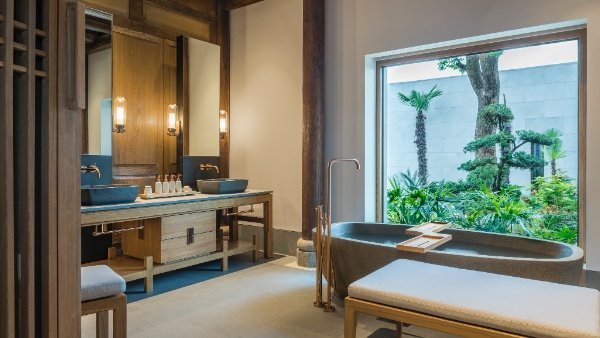
We begin our list with the highly anticipated Amanyangyun. Over 15 years in the making, this beautiful heritage property was born from the vision of a successful, young real estate entrepreneur to preserve his home village from destruction. In 2002 a plan was conceived to relocate ancient village mansions and a camphor forest from his hometown in rural Fuzhou to Shanghai 700km away. Once in their new home the labor-intensive process of reassembling these century old villas, brick-by-brick, began. Today guests have the choice of staying in one of 13 exquisite Antique Villas – like the Imperial Palace, except nicer – contemporary pavilions set within the outer wall of an Antique Villa’s courtyard or in one of 24 contemporary suites. With three restaurants, two swimming pools and a fabulous cultural center, the Amanyangyun is an extravagant delight in Shanghai’s southern suburbs.
2. Middle House | Shanghai
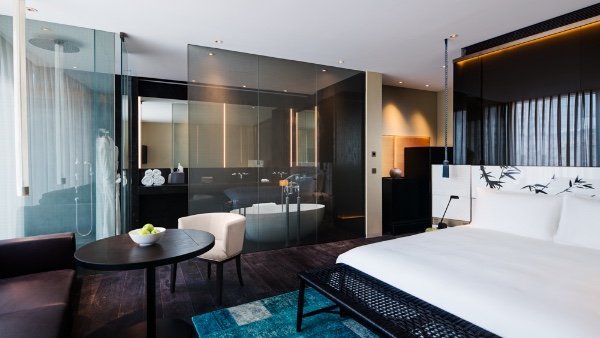
The fourth addition to Swire’s top line House Collection of modern, stylish small hotels, Shanghai’s Middle House combines 111 rooms with a smattering of residential apartments for hotel use in Shanghai’s central Jingan Temple area. Combining both global and contemporary Shanghainese vibes in its cutting edge design, Middle House combines bold artistic gestures for example its asymmetrical designed lobby, with an elegant and restrained sensitivity to create spaces that are at once thought-provoking, fun and comfortable. The uniqueness of design is further reflected in the structural design of the dining, bar and seating areas of the hotel’s breakfast and all-day dining restaurant, Café Grey, providing a glimpse of how hotel public spaces will be used in the future. The hotel also features both Chinese and Italian restaurants, outdoor terraces and a private members social club, providing guests with plenty of options for entertainment.
3. BVLGARI | Shanghai
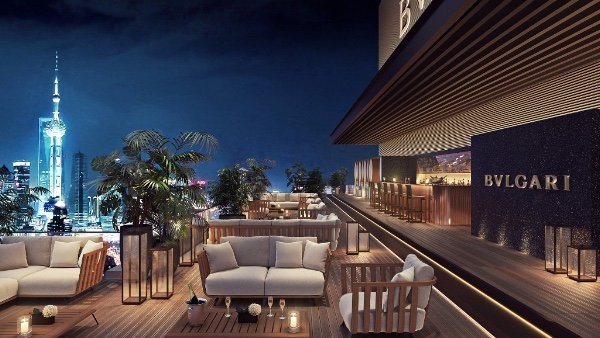
Featuring 82 rooms and suites on the upper eight floors of a 40 story skyscraper, the BVLGARI Hotel Group’s newest property is getting ready to make its debut. Located in the Hongkou district of Shanghai, which has benefited in recent years from extensive gentrification, the Bulgari Shanghai provides spectacular views of the Yangzi River and is only a short walk from the famous Bund and Nanjing Road. Like its sister property in Beijing, the Bulgari Shanghai has been designed by Antonio Citterio, originally a furniture designer, featuring a tan-based color palette with a focus on tremendous residential luxury – this is the fashionable Milanese pad you’ve always dreamed of owning. Although the interiors of the Bulgari Shanghai are slightly darker than those in Beijing, the properties are so similar they will foster a strong brand identity and following amongst both Chinese and international travellers. As well as being exquisitely designed, the room views to both the Suzhou Creek embankments to the west and the British settlement in the south are both beautiful. Finally, we cannot go without mentioning our excitement for the opening of the distinctive Bulgari Bar and accompanying rooftop Italian restaurant, which are sure to provide guests with a one-of-kind dining experience.
4. Bellagio | Shanghai
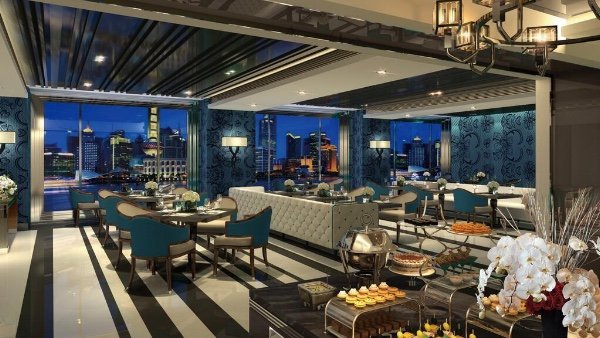
Setting roots in the same Hongkou district as the Bulgari Shanghai, the Bellagio Shanghai is a 10 story building offering 162 capacious and comfortable rooms and suites a short walk from the Shanghai Bund. Bellagio have cleverly located many of its public spaces in the south east corner of the property which offer wonderful vistas showcasing the Yangzi River, the Suzhou Creek embankment, with the Russian consulate in the distance, and the British settlement across the river. The all-day dining, Julian Serrano’s Italian restaurant Lago and the spa are all located in this section of the building on different floors. And it would be remiss no to mention the glass-walled sauna offering the same view. In this way, if you are booked into a river racing room, you are repeatedly reminded of the magnificent view as your move through the property. The Bellagio’s modern interpretation of the Art Deco style echoes the design of the early twentieth century heritage building, which is connected through the main lobby, and houses the hotel’s Chinese restaurant where guests can savour renowned classics like Peking Duck. Thanks to the Bellagio Shanghai’s local Chinese partner Diaoyutai, the group running the State Guest House in Beijing, this restaurant will be adopted quickly by Chinese clients for elaborate banquet meals.
5. Alila | Yangshuo
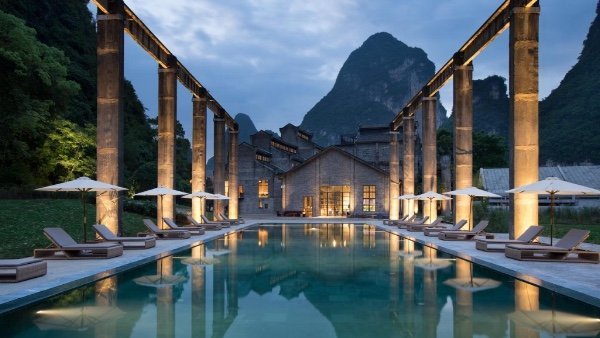
Alila have successfully concluded an ambitious project, converting an old sugar mill cradled by limestone pinnacles in a curve of the Li River Yangshuo, for use as a hotel. The artistic framing of the central public area, particularly of the sunken pool overlooking the Li River and scenery beyond is spell-binding and speaks to the aesthetic core of this originally Indonesian hotel group. The 117 rooms, suites and villas are accommodated mostly in tastefully furnished new buildings that sensitively echo the style of the 1960’s sugar refinery.
6. Mandarin Oriental | Beijing
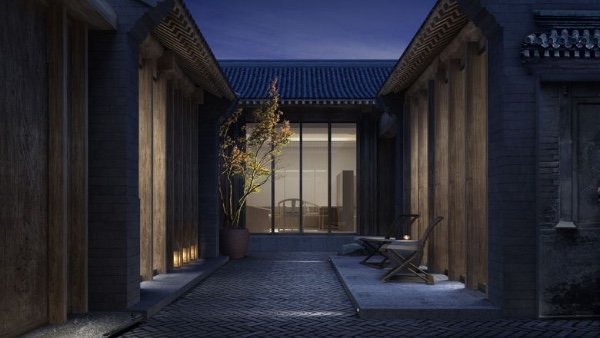
The highly anticipated and long-awaited Hutong based Mandarin Oriental is currently set to open in September 2018 in Wangfujing, the heart China’s capital city, near the famous Tiananmen Square. Situated in the traditional Hutong quarter of the city, guest will be able to glimpse ancient Beijing architecture dating back to the 13th century. Nestled amongst courtyard homes, local boutiques and narrow alleyways the Mandarin Oriental will feature a traditional tea lounge, multiple food and beverage outlets, an indoor swimming pool and a rooftop terrace where guests can look out over the city.
7. BVLGARI | Beijing
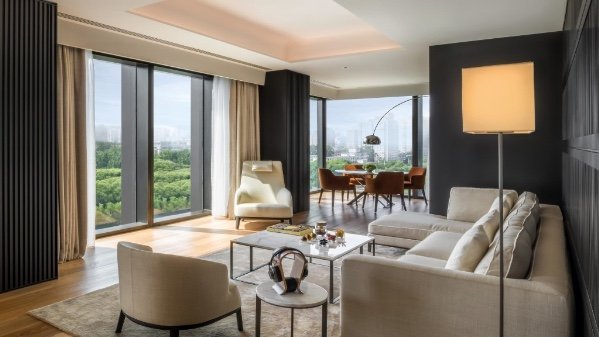
What’s most surprising about the 119 room Bulgari Beijing is how successful it has been in regenerating the canal by which it stands and how much this has added to the property. The owner did such a terrific job of cleaning up the waterway and its once dilapidated banks that the Bulgari’s unexpected strengths now include its scenic location by the canal’s crystal blue waters and its magnificent views over Beijing’s verdant embassy district. Like the Shanghai Bulgari this property focuses on residential excellence and fine Italian design. The style bespeaks comfort, quality and simplicity. The bar is fun and the Italian restaurant by Niko Romito offers delightful Italian cuisine. There is no fussiness here – as a guest, you just relax and savor it all.
8. Peninsula | Beijing
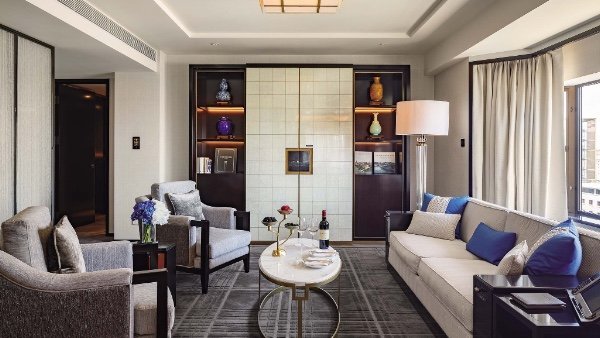
Although the Peninsula Beijing reopened its doors in the spring of 2017, we have saved space for it on this list because, at the end of the last year, it rebranded itself as an all-suite hotel. (Click here to see our full review of this hotel from last fall.) It is important to note that the smallest suite at this all-suite hotel is a generous 600 square feet (60 square meters) and features a sitting room, bedroom, a separate dressing area and of course a beautiful marble-tiled bathroom.
9. Park Hyatt | Beijing
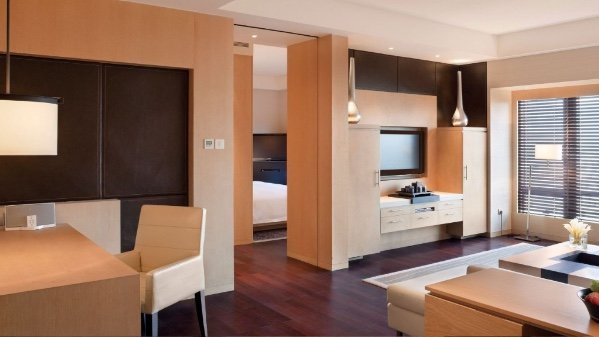
We conclude with the extensive recent renovation of the Park Hyatt Beijing in time for its tenth anniversary in October this year. The browns and creams of the originally handsome Peter Remedios design have been softened with a variety of pastels and enhanced with a greater range of textiles and fabrics. This lighter colour palette works well with the open bathroom concept to create a seamless residential space. Over the course of the year, the lobby and dining area with great views over the heart of Beijing’s business district will also be freshened. With all these new facilities, there still remains the particular panache of Park Hyatt’s great service. They really know what they are doing. During our visit, we were delighted to catch up with legendary Hyatt culinary leader Jack Aw Yeong, whose role is now limited to being the Executive Chef at this property, a formidable guarantee of excellence.
With that we circle back to our original statement of how excited we are to welcome these new hotels to an already amazing line up of hotel in China already – each with a unique perspective and style. One could even say visitors to China are as spoiled by the available choices as they are by the incredible value for this level of luxury.
The Retail Revolution
China has fast become the holy grail of shopping. Be it high-end or low-end, costly or counterfeit, China is the place where you can find just about everything. In the last decade, the biggest manufacturer in the world has developed the largest consumer base globally. This large population of freshly minted consumers has caused luxury retailers to scramble for a piece of the pie, or should we say, cookie? While sold out Louis Vuitton shops and limits on how many Rolex’s one customer is allowed to buy have been picked up by Western media, another retail revolution has prospered largely unnoticed within China’s borders; online shopping. With $900 billion in sales in 2016 alone, and responsible for almost 47% of digital retail sales worldwide, China has eclipsed the US and is now the largest online retail market in the world (Retail & Ecommerce, August 18, 2016). The story of how this rapid growth in retail evolved is almost fatalistic, with multiple companies taking advantage of an economic environment primed for shopping.
From Zero to Hero
In comparison to many Western countries, wealth and technology are relatively new to China. A significant portion of the Chinese population only began to experience a degree of economic prosperity in the mid 2000s. The rise of the middle class in China has been rapid. During this time of economic expansion, the number of households with an annual income of US$11,500 – US$43,000 grew from 5 million in 2000 to 225 million in 2016 (Economist, 2016). Along with this increase in wealth came an increased demand for technology. Instead of having to go through the technological steps Western consumers went through from gramophone to an iPhone, the first digital contact for many Chinese was either a smart phone or a tablet. However, since almost no digital or retail infrastructure had been built, and with no old infrastructure to tear down, Chinese companies who were able, were in the prime position to take advantage of this technological vacuum. From start-up delivery firms to creating new payment systems, this period laid the foundations for the new digital era.
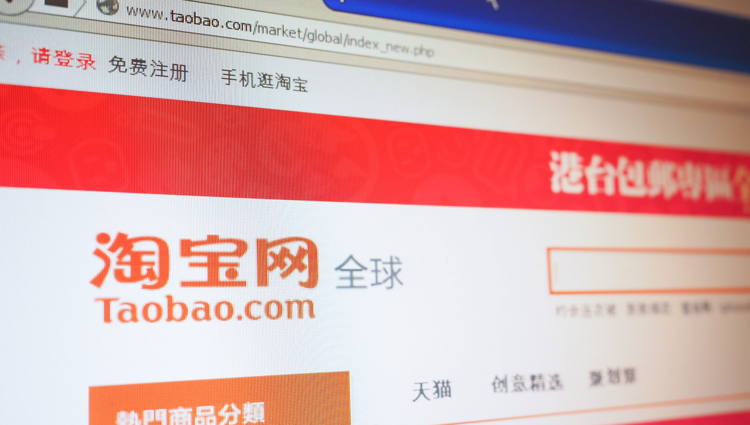
Taobao – a populat online shopping site in China
Enter the Giants
The three largest online players in China presently are JD.com, Tmall aka Taobao (Alibaba) and WeChat. JD.com went online in 2004 and is the largest competitor to Alibaba-run Tmall, which was founded a year earlier in 2003. Both companies are B2C online retailers who have pretty much taken over China’s online retail market. While JD.com prides itself on having better quality controls on their brands and goods than their competitor, Tmall currently holds a larger portion of the overall market share and has deeper pockets financially. Alibaba, the parent company of Tmall became the largest global IPO ever when it went public in the United States in 2014. Combined, these two companies are the Chinese equivalents of Amazon and Ebay, the only difference being that their customer base is over one billion online savvy shoppers.
Enter WeChat, the super app. WeChat was first released in 2011 by its parent company Tencent, and with 850 million active users, it is now China’s most popular instant messaging application. While the logo and the name of the app look and sound similar to the American WhatsApp application, it is vastly different in its functions and capabilities. The best way to describe WeChat is a combination of Facebook, WhatsApp, Apple Pay, Instagram, TripAdvisor, SkipTheDishes, and online city services combined, but without the advertising. While this sounds quite chaotic and confusing, at its core WeChat is an instant messaging app with all other functions neatly hidden within. While WeChat is not an online retailer itself, it has created its own mobile payment system (WeChat Pay) and has a larger user base than Tmall or JD.com. However, recently WeChat has ventured into creating an online store, which soon could rival its competitors.
For these three companies China has become the digital ‘Wild East’ where opportunities abound. With more and more economic prosperity as well as a savvy online population, the e-commerce environment in China is the perfect breeding ground for digital entrepreneurs to thrive. Right now, between these three giants there is fierce competition for supremacy.
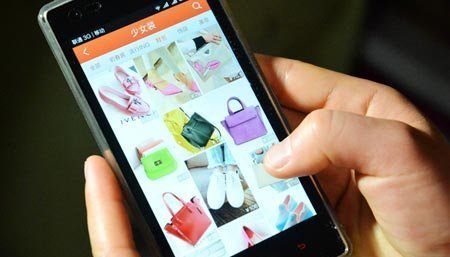
Online apps and sites It has become easier than ever to shop from anywhere
Shopping with Chinese Characteristics
In addition to a rich economic digital landscape, China’s unique political and economic landscape has resulted in oddities and strange paths to purchase.
One of these oddities is the phenomena of the Daigou, which literally translates to “buying on behalf”. Daigou’s are people living overseas who purchase luxury goods as well as items that can be hard to purchase in Mainland China like foreign baby-milk powder, and then sell them to customers living in China. These luxury items can be up to 30-40% more expensive in China and the Daigou either make a profit on charging a small fee for the service or claiming the tax refund. WeChat is the primary platform for Daigou to communicate with their clients as well as transfer money. Diagou is a huge business estimated to be worth around US$12 billion. Approximatley 80% of Chinese luxury purchases are made abroad and a survey of luxury shoppers has found that 35% of customers have used a Daigou to purchase goods online while only 7% used the brands’ website to do so.
Another oddity about Chinese people’s shopping culture is that there is very little trust in direct marketing and advertisement. This mentality has led to the rise of Key Opinion Leaders or KOLs. These are Chinese online influencers, similar to Bloggers or Vloggers in the West, who maintain trusting relationships with their often large fan base. This phenomenon has resulted in many companies hiring KOLs to endorse products or place ads in their feeds to market to their fans. Working as a KOL can be quite profitable if your fan base is large enough. For instance, KOL Papi Jiang, has a following of over 24 million fans on Weibo (China’s equivalent to Twitter) and was paid US$3.4 million for a single ad in 2016 (China Skinny 2016). While Papi has managed to amass her millions of fans through witty commentary and funny videos, other KOLs have made themselves experts on specific brands or items and often attend fashion shows to share their knowledge and expertise with their followers. One of these expert KOLs is ‘Mr. Bags’ a 24-year-old Beijinger with over 2.7 million followers on Weibo. Using his influence he claims to have helped brands sell over US$170,000 worth of designer bags in just 12 minutes (Business of Fashion, 2016).
Both Daigou’s and KOLs are phenomena that have emerged as a result of the unique position of the Chinese economy and its cultural past. While the world has opened up its markets to Chinese made products, not all foreign made products have found a way into the Chinese market yet, which has created a niche for the Daigou. Additionally, decades of state propoganda has made the Chinese population suspicious of anything written on billboards or aired on TV resulting in the rise of the KOLs.
Digital Destiny
In 2015 China’s e-commerce share of global sales were almost double that of the United States at 22.2% to 42.8% respectively. However, it is estimated that by 2020 China is on course to take up to 60% of worldwide e-commerce retail, while the United States share could drop as low as 17%. With an ever expanding middle class, with more disposable income, greater mobile and internet penetration into rural areas and growing competition of e-commerce players who are constantly improving logistics in China, infrastructure and payment systems, the environment for online retail is perfect. Additionally, one of the most astonishing aspects of this digital shopping revolution is that in 2016 more than half of all e-commerce transactions and sales in China were conducted on a mobile or tablet. Reading the signs on the retail horizon, it is a safe bet to predict that China’s shopping destiny is digital.
As a country with a global reputation for cheaply manufactured goods, China is now making moves to shake off its ‘Made in China’ label and show the world its capacity for innovation, creativity and ingenuity.
That said, China’s fashion industry is caught in a contradiction. China is one of the largest producers of fake luxury goods, while at the same time boasts the single largest market for luxury retail in the world. This contrast has become the perfect breeding ground for a multi-faceted and diverse shopping culture to arise.
Repression of Expression | Understanding the Roots of Modern Chinese Fashion
To understand where China’ s fashion industry is headed, it is crucial to first understand more about China’s past ‘fashion’ standards. Up until the early ‘90s, China had virtually no brands or self-expression to speak of. Due to high inflation and a weak economy, Chinese people were relatively poor, only spending money on essential items. In addition, prevailing communist ideology meant standing apart from the crowd was seen as bourgeois and regarded unfavourably. Conformity was the ‘in-vogue’ fashion statement. The streets of China during this period were a sea of military green jackets, blue Mao-suits and grey workers’ robes. For women in the ‘50s and ‘60s the most desirable fashion accessory was a leather belt used to accentuate their waists in an effort to distinguish them from men.
After the ‘90s, as a result of China’s economic reform and soft embrace of western culture, much-needed swatches of color were introduced into the dull shades that had dominated China’s ‘fashion’ scene for over four decades. In contrast to the repression of previous times, the floodgates of ‘anything goes’ fashion unfurled across the country, hitting major cities like Beijing and Shanghai. Today, the shockwaves from this period still reverberate amongst Chinese women in their 40s, 50s and 60s. For example, today it would not be uncommon to see such women clad in brightly colored clothing adorned with sparkles, funny pictures and often ironic English text.
A New Take on ‘Made in China’
Today China’s latest and hottest fashion designers are a product of changes that took place in ‘80s. This is because children born in this period became the first generation of Chinese to have the luxury of going abroad and experiencing the world beyond China’s borders. With the implementation of the One Child Policy in 1979, the traditionally large Chinese family was reduced to three members. Combined with a growing Chinese economy, these smaller families had more money to spend on education and experiences for their one child. With new wealth and more open borders many Chinese families in this generation opted to send their only child to attend school outside of China. Those interested in pursuing fashion and design followed their passions to gain admittance to prestigious design schools in London, New York, Paris and Milan. Many of these pupils gained experience with some of the world’s most renowned designers before returning to China to develop their own labels and boutiques. This influx of returnee Chinese fashion designers, fusing Western and Eastern statements, and with a better understanding of Asian body proportions, has resulted in some of the hottest fashion brands and designers around today.
On the Catwalk
HAN FENG
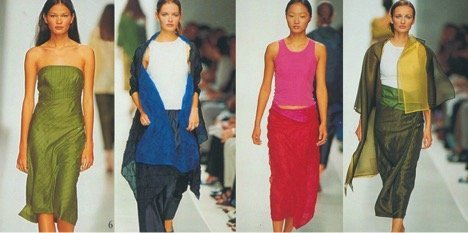
The first Chinese designer to have her garments grace the catwalk at New York Fashion Week in the early ‘90s, Han Feng is a pioneer in the Chinese fashion industry. Her signature style showcases intricate pleating with timeless silk fabrics in colors and designs that change seasonally. In an effort to seamlessly blend the divide between Eastern and Western fashion culture, Feng’s dedication goes beyond simply fusing East and West. Completely devoted to the purity of her craft, Feng prefers to meet with her customers personally to exchange a dialogue where she is able to share recommendations and customize the shopping experience.
MASHA MA
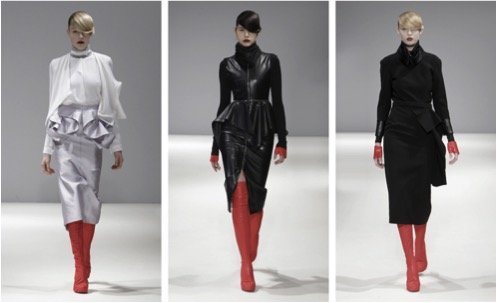
Since the launch of her label in 2008, Masha Ma has gained instant international attention for her chic and futuristic designs. Having worked with designer labels such as Alexander McQueen and Dolce & Gabbana, as well as counting Lady Gaga and Naomi Campbell among her customers, Masha Ma is one of the most celebrated fashion designers in China. With a boutique shop in both Shanghai and Paris, the Beijing native regularly presents her collections during Paris Fashion Week. Her signature style is a combination of effortless modern femininity coupled with brash industrialism.
HUISHAN ZHANG
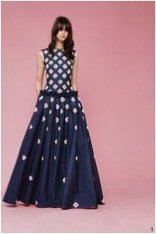
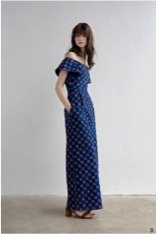
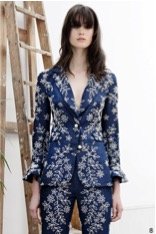
Leaving China at the age of 17, Huishan Zhang started his extraordinary career being hand-picked by Delphine Arnault to spend his third year of fashion design study in the House of Dior in Paris. After graduation, Zhang created a luxury brand combining Eastern and Western influences. This marries feminine details with strong lines. His couture ‘Dragon Dress’ has become a permanent piece in London’s Victoria & Albert Museum. In addition to having dressed Gwyneth Paltrow, Keira Knightley, Helen Mirren and Samantha Cameron, Zhang’s collections can be found at upscale department stores such as Barneys and Joyce.
YIGING YIN
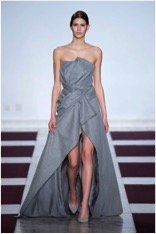
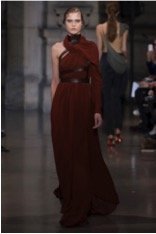
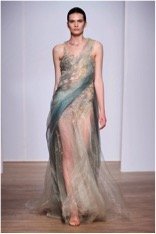
Born in Beijing in 1985, Yiging Yin studied fashion in Paris before launching her own brand in 2010, designing clothes in her apartment. From humble beginnings Yin has since received multiple awards and has showcased her collection during the prestigious Paris Couture Week. Yin’s designs emphasize pleats, fluid lines and femininity. As the first Chinese-born, not to mention the youngest, designer to be admitted to Paris’s exclusive elite coterie of haute couture designers, Yin is a designer to watch.
UMA WANG
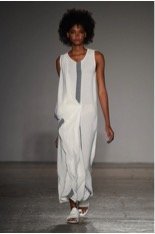
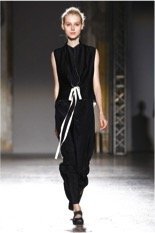
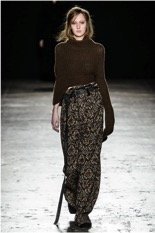
One of China’s most famous fashion designers, Uma Wang has showcased her collection at all the major fashion weeks. After ten years designing textiles and patterns for Chinese labels, Wang launched her own namesake label in 2009. Her signature knitting technique and dedication to balancing fashion with functionality has consistently won her accolades both in China and abroad. She is particularly skilled in mixing and matching different fabrics and textures to create simple but strong garments with subtle detailing.
GRACE CHEN
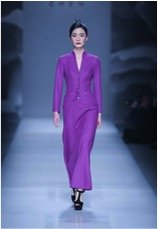
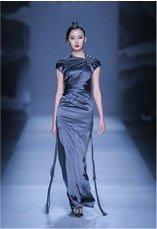
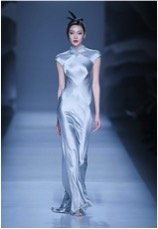
After studying and working in New York for 15 years, Grace returned to Shanghai to open her own couture brand in 2009, The House of Grace Chen. Officially opening its doors in 2016, and located in Shanghai’s trendy French Concession, Chen’s boutique resides in a beautifully restored heritage Art Deco villa originally built in 924. This artistic mansion integrates a collection showroom, VIP fitting salon, an art gallery, library, dining room and fashion lounge all in a seamlessly designed open concept space. No stranger to the lime light, Chen’s garments have been worn by Chinese mega-celebrity Fan Bingbing and international celebrities such as Oprah Winfrey and Helen Mirren.
MA KE
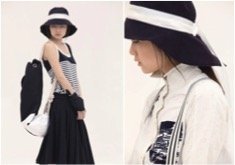
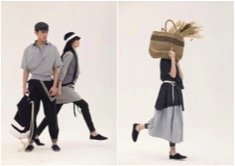
Celebrated for her dedication to preserve Chinese traditions and her commitment to environmental consciousness, Ke has developed two designer labels: Exception de Mixmind a ready-to-wear line and Wuyong a haute couture line. A true innovator, Ke’s Exception de Mixmind label is often referred to as China’s first designer brand. She is one of very few Chinese designers who have been allowed to present at Paris’ Couture Week. In addition to international recognition, China’s First Lady Peng Liyuan has also worn Ke’s designs on several occasions. His signature style incorporates an emphasis on environmentally friendly fabrics and uses locally sourced cotton, silk, linen and wool material. Techniques used include traditional dyeing, weaving and embroidery inspired by local minorities from the South of China. Ke has even gone so far as to incorporate traditional sewing equipment into her collection such as a Chinese loom dating back to the 19th century.
GUO PEI
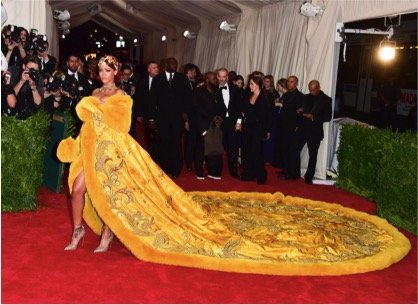
Best known for designing garments for Chinese celebrities and Rihanna’s trailing yellow gown for the 2015 Met Ball in New York, Guo is one of China’s most influential designers and was listed as one of Time Magazine’s 100 Most Influential People in 2016. Often compared to the likes of Alexander McQueen and Coco Chanel, Guo’s style incorporates materials such as silk, fur and embroidery work, borrowing heavily from traditional Chinese imperial court design. One of Pei’s silk couture evening gowns embroidered in gold can be viewed on display at the Metropolitan Museum of Art in New York City. As a result of her elaborate and distinct style as well as international media exposure from her unique designs, Pei is one of the most recognizable Chinese designers among Western audiences.
The Future of Runways
‘Made in China’ is being transformed by emerging internationally acclaimed designers capitalizing on more liberal fashion trends. China has become a blank canvas for designers to make their mark in the largest luxury market in the world. While it is undeniable that China has made incredible advances in the fashion industry in the last two decades, there is a still a long road ahead before Beijing and Shanghai Fashion Week will have the same international outreach as Paris, London, New York or Milan. However, considering how dynamic China’s fashion industry is and given its large consumer base, it is only a matter of time before Fashionistas on 5th Avenue excitedly open the newest Vogue to check out the collections coming out of the Middle Kingdom.
Shopping with Imperial Tours
Whoever said that money can’t buy happiness, simply didn’t know where to go shopping – Bo Derek
‘Custom made’, ‘couture’ and ‘exclusive access’ are just some of the terms you come across on a Shopping Itinerary with Imperial Tours. Our team can design bespoke shopping tours incorporating designer boutiques in Shanghai, Beijing and Hong Kong. We can also arrange a personal dress fitting with some of China’s design icons. Contact us to find out more about these labels, where to find them and how Imperial Tours can arrange a unique and exclusive shopping experience in China.

Marketing China has never been more exciting, easy and profitable. As you may know Imperial Tours has partnered with Peninsula Hotels to bring you Peninsula Private Jet Tours Through China. Through this collaboration we have developed three bespoke travel experiences through China: Culture & Heritage, Family and Culinary. But what you may not know is that we have also developed a marketing plan designed to help you get the word out about these itineraries. Our Marketing Plan gives you the tools you need to promote and share Peninsula Private Jet Itineraries through multiple mediums. The idea behind sharing our marketing plan with you is to take the guesswork out of promoting these experiences. Essentially, let us do all the work for you and all you need to do is share!
These itineraries are packed full of once-in-a-lifetime experiences. If they are booked privately, itineraries can be further customized for alternative dates or embellished with different destinations, and if wished they can also be booked on commercial flights.
Our Marketing Calendar (click to download) is complete with step-by-step instructions on how to market and capitalize on each itinerary. All you have to do is follow five easy steps and let Imperial Tours do the rest.
Follow us on Twitter, Facebook and Instagram to get content on Peninsula Private Jet Tours that you can share with your followers.
Click to download our Marketing Calendar made especially for you. This calendar provides you with a detailed, easy to follow, marketing campaign that you can print out and follow to promote these tours. Additionally, our Marketing Calendar provides you with easy to follow instructions on how to repost and share from Facebook, Twitter, Instagram and E-blast.
Over the next 3 months, starting in November 2016, we will be sending out 3 e-blasts relating to a specific Peninsula Private Jet Itinerary; Culinary, Family and Culture & Heritage. Each e-blast will be created so that you can forward the information to anyone you think might be interested in one of these amazing experiences.
Each one of our 3 e-blasts will have a social share button that allows you to share each itinerary on Twitter, Facebook & Instagram. Simply click the social share button for each social icon and share!
After generating interest in each tour contact us to help you book one of these amazing journeys. Note: private tours based on these scheduled departures can fly commercial and be further customized.
Our Culinary Voyage e-blast will be sent shortly after American Thanksgiving. This one of a kind itinerary provides opportunities for your clients to try their hand at creating traditional Chinese dishes such as Peking duck, Dim Sum and even noodle throwing. China is a “must-eat” destination for all foodies; our Culinary Voyage is a 10-day tour highlighting the best eats China has to offer. Our culinary tour is ideal for groups of 8 or less. Tours are approximately USD$26,050* per person based on double occupancy. To view a detailed itinerary click here.
Our Family Tour e-blast will be sent in early December, in time for Christmas as the perfect once-in-a-life-time holiday gift for the whole family. This 11-day tour showcases the best of China in a safe and family-friendly interactive setting. This tour is ideal for small to medium sized families who are looking for a unique holiday experience and enjoyment for the whole family. Tours begin at approximately USD$102,120* per family of 4. To view a detailed itinerary click here.
Our Culture & Heritage itinerary will be sent out after the New Year and is equipped with unparalleled access to some of China’s most significant cultural artifacts as well as leading creative minds shaping China’s artistic landscape. This 10-day tour will introduce you to private collections and VIP access to China’s cultural treasures. This tour is ideal for clients who are looking for exclusive access to all that China has to offer. This tour is suitable for small groups as well as families. Pricing begins at approximately USD$25,530* per person based on double occupancy. To view a detailed itinerary click here.
*Price is subject to change based on fluctuating exchange rates.
By April 2017, the Peninsula Palace Hotel will have completed its US$123 million extensive renovation of what was already one of the best known luxury hotel properties in Beijing. If the early 1990’s white-tiled, pavilion-roofed building (a classified heritage property) revealed China’s attempt to qualify western-defined modernity with Chinese characteristics, then the new renovation combining classical Imperial themes and the best contemporary art within an ultra-luxury context is more than a simple coming of age. With super-sized, beautifully detailed guest rooms, a new check-in approach and its own art gallery, the Peninsula Palace Hotel hints at China determining its own path to the future.
When the Palace Hotel first opened its doors in 1989, it introduced the first luxury shopping mall to Beijing. More than a symbol for statesman Deng Xiaoping’s famous aphorism “to get rich is glorious”, it became the venue for the newly wealthy to realize their early consumerist fantasies. Since 1990, the year Peninsula Hotels took up management, the Palace Hotel has been THE hotel for Beijing’s cognoscenti and elite.
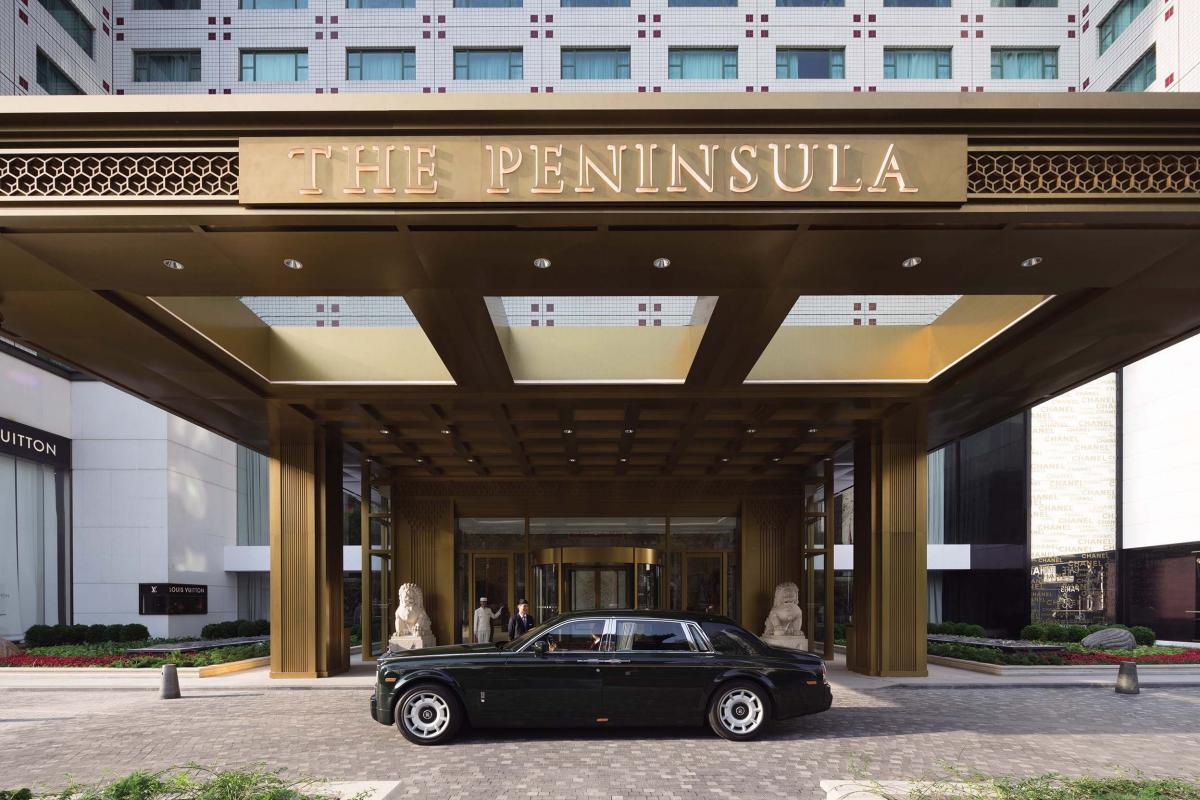
Welcome to the newly renovated Beijing Peninsula Hotel
Besides a US$27 million refurbishment in 2002 that focused on the Presidential Suite, club floor and the two restaurants, Chinese and Western, little had changed between 1989 and 2012. When Joseph Sampermans, previously Hotel Manager at the sister Hong Kong property, was appointed to be GM and tasked with the project of renovating this Grande Dame, plans for making the premier hotel in Northern Asia commenced. “How do you think it should be?’ he asked Nancy and myself at an early meeting. “Like a Peninsula,” we rejoined.
In the same property that previously had served 525 guest rooms, from April 2017 when all the rooms will be returned, there will only be 230. Even though the hotel insists these 230 are mostly “rooms”, let me share a secret with you. They’re not. Each room, with a standard area of 650 square feet or 65 square meters is actually a suite offering a separate bedroom, bathroom, dressing room, and a sitting room. Which begs the question: if the rooms are already suites, then what are the suites? Large would be the apposite description – whereas, broadly speaking, two former rooms were combined to create a new room, at least three former rooms have been combined to create the newly styled suites. And with 61 suites out of 230 keys, this hotel is luxuriously equipped. If you bear in mind Peninsula and Joseph’s bold ambition to create the finest hotel in northern Asia, the grandiose use of space makes sense.
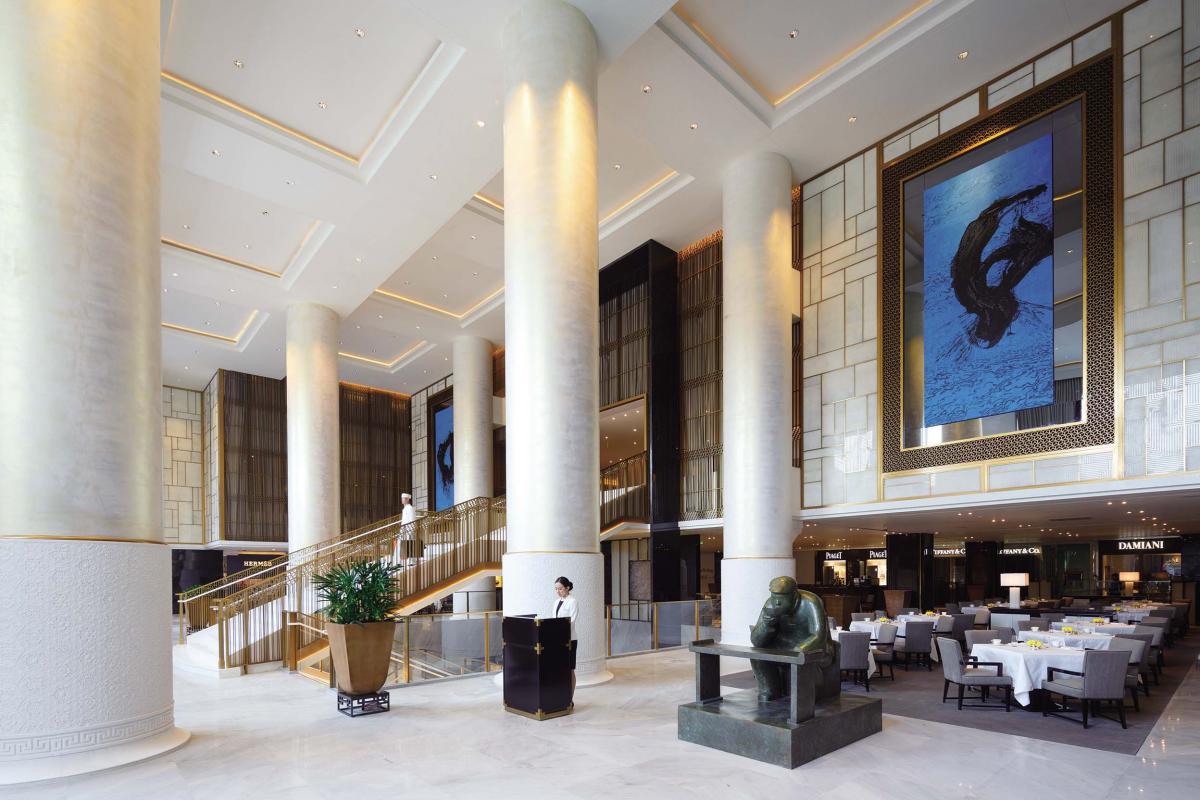
Newly redesigned lobby featuring Zhang Du bronze sculptures
Apart from the handsome renovation of all the surrounding retail areas, there have been three main changes in the lobby. Most importantly, seating for a new dining area has been brought to the fore behind the beautiful over-sized Zhang Du bronze sculptures. The sight and sounds of a dining crowd personalizes the vast space that this three story lobby encompasses. Structurally, the under-lit staircase has been modernized to lead from the ground floor up to the banquet areas, thereby dividing the space in two between six beautiful new white marble pillars. As a result, banquet and conference guests are neatly guided through the lobby. Room guests, by contrast, are met near the front doors by cross-trained, iPad equipped hotel staff to be whisked to a welcome area, and from there directly to their rooms where check-in takes place.
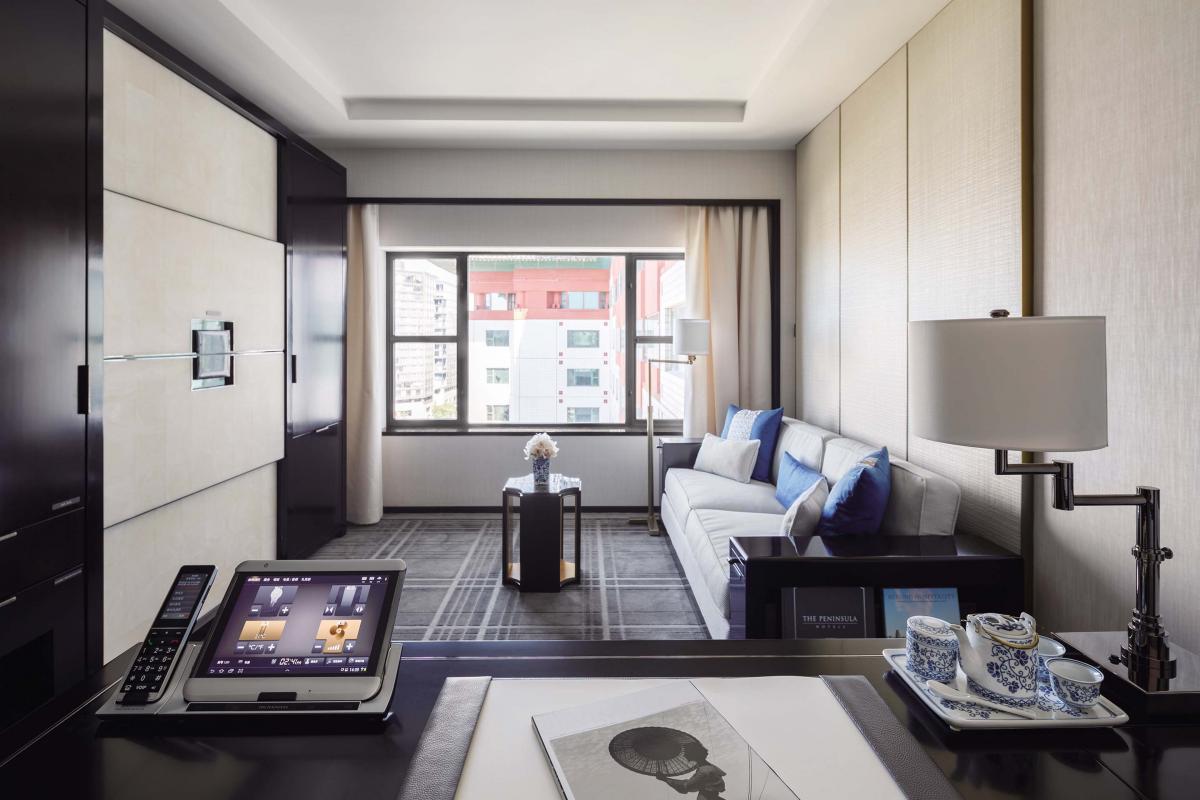
Contemporary living space in the Peninsula Suite
The detailing of the upholstered rooms was a marvel. The leather cladding of the drawers, neatly labelled, makes you think of the upholstery in the Peninsula Rolls Royce. The blue and white couch both complements and contrasts with the muted whites and creams of the room. The richly appointed bathroom, with black marbled floors and white marble walls and a matching abstract ink painting above the bath, is a space that works.
“Intuitive technology” has been a big part of Peninsula’s efforts since the renovation of the Hong Kong Peninsula with which Joseph was also involved. The Beijing Peninsula takes this journey one stage further with the addition of mobile phone ports in both the sitting room and bedroom, which instantly connect your phone with the room’s multimedia system and allow you immediately to watch videos on the LCD Screen and play your music on the stereo without ever having to touch a button. In addition to these new services, Peninsula of course still provides free international VOIP calls from the room telephone. Peninsula’s ambition is not to have gadgetry for its own sake, but to provide room services immediately and intuitively. For instance, I used the hotel room’s iPad to order an iron to my room. To my surprise, it arrived promptly ten minutes later, such that I was able to get ready for dinner.
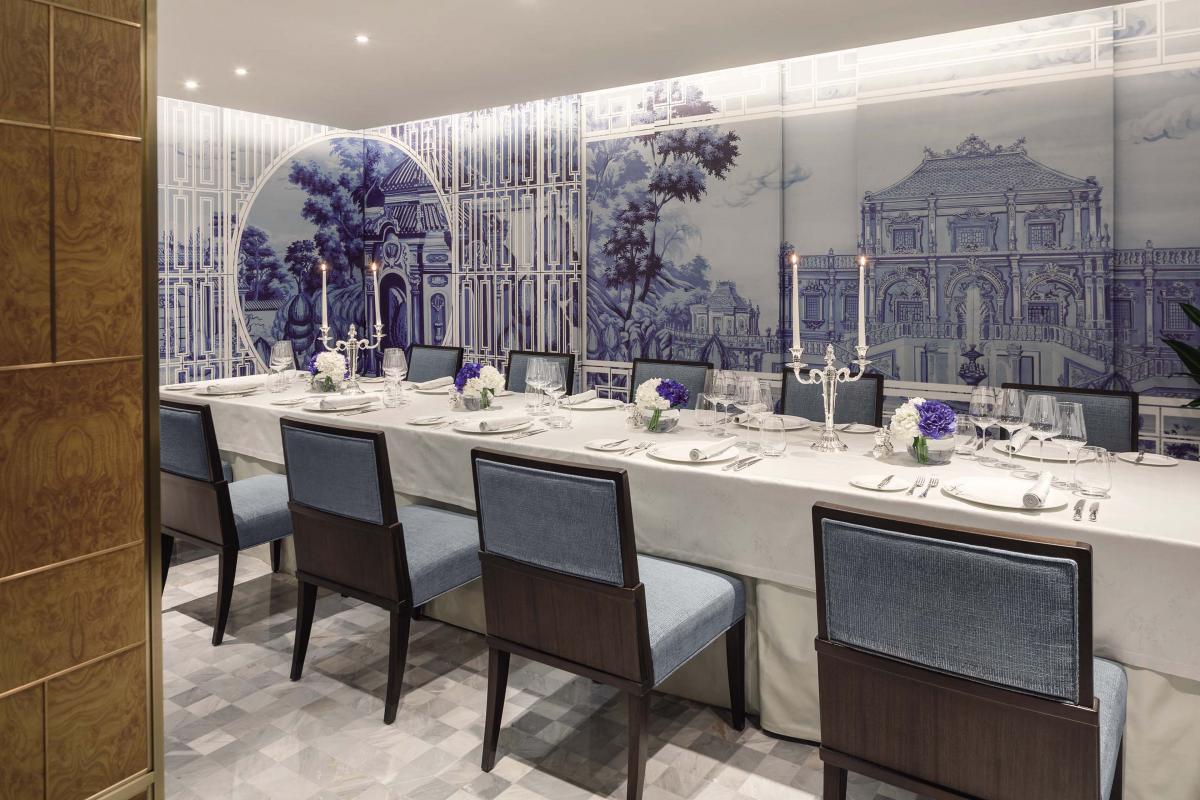
Traditional blue & white ceramics in the Jing Restaurant
Jing, the western restaurant, also got a complete make over to become very much at one with a more sophisticated presentation of Beijing. The long cocktail bar vestibule leads into an elegant room whose walls are adorned with appealing Chinese contemporary art. It is only on a second take that one notices recesses leading to private dining spaces, such that the restaurant is both intimate and capacious at the same time. (The art works are so good, that we ended up touring the entire space as though it were an art gallery). Spanish chef, Alberto Becceril, working with a farm to table concept that prioritizes locally-sourced organic produce, conjures refreshingly innovative and elegant dishes. Becceril’s dishes in no way resemble some kind of dramatic chemistry experiment. Their traditional grounding is as apparent as his artistry in the sophisticated new interpretation and presentation.
This sophistication is a theme that echoes throughout the project. Its contemporary art consistently makes reference to classical or traditional themes or materials. The abstract ink painting in the bathroom reflects the deep tradition of calligraphy. The Zhang Du bronzes remind one of statues typically greeting visitors in traditional tea houses. One of the art pieces in Jing plays with traditional blue and white ceramics; a second displays the traditional skill of embroidery. Similarly, the guest room design combines the classic upholstery one finds in traditional car brands with the latest in-room technology. Everywhere you see a clever interplay between contemporary and traditional design to create an elegant interpretation of the present.
It’s both a thrilling and tough job to be an opening GM, the arbiter of an entirely new hotel project. Joseph was tasked with creating the best hotel in Northern Asia. Has he succeeded? This is a question that only time and you can answer. However, there are two undeniable facts. Firstly, Joseph has helped to create a Peninsula worthy of the name. That’s challenging because of the paradox of ensuring that the property is not formulaic whilst simultaneously adopting elements common to the brand. Secondly, Joseph and Peninsula have given it their all – there has been a massive investment in design, contemporary art, technology, and space harnessed within a sense of style that is the preserve of only a handful of hotel companies. The property does not hedge its bets behind tradition. It extends itself ambitiously to the future, and in so doing it helps define its locale. The China of 2016 is far more self-confident, stylish and global than thirty years ago; it is hardly surprising that the Peninsula expresses this.
Stone door houses, or shikumen, line long and narrow alleyways as if trying to contain some secret. Locals hang their laundry out of windows above the various cafes, art studios, and craft stores held inside the shikumen, as mesmerized shoppers shuffle between shops. The aromas of Indian food, Moroccan food, and Chinese food all fuse with the bohemian atmosphere that permeates this little slice of city life.
This place is Taikang Lu. Originally providing inexpensive space for art galleries and media companies, it has grown into a shopping area with more than 200 stores all housed in the historic alleyways of Shanghai. Although known for its vitality, this labyrinth of shops can easily become overwhelming. Let Imperial Tours' China Hosts ease your experience with their in-depth knowledge of China and our personal connections to the best designers, artists, and crafts people. We never take commissions in exchange for your purchases, so what we recommend is tailored to exactly what you want.
Below are some of the places to shop in Taikang Lu, but having a China Host on hand will ensure you get the most of your shopping experience by visiting the best boutiques based on your preferences.
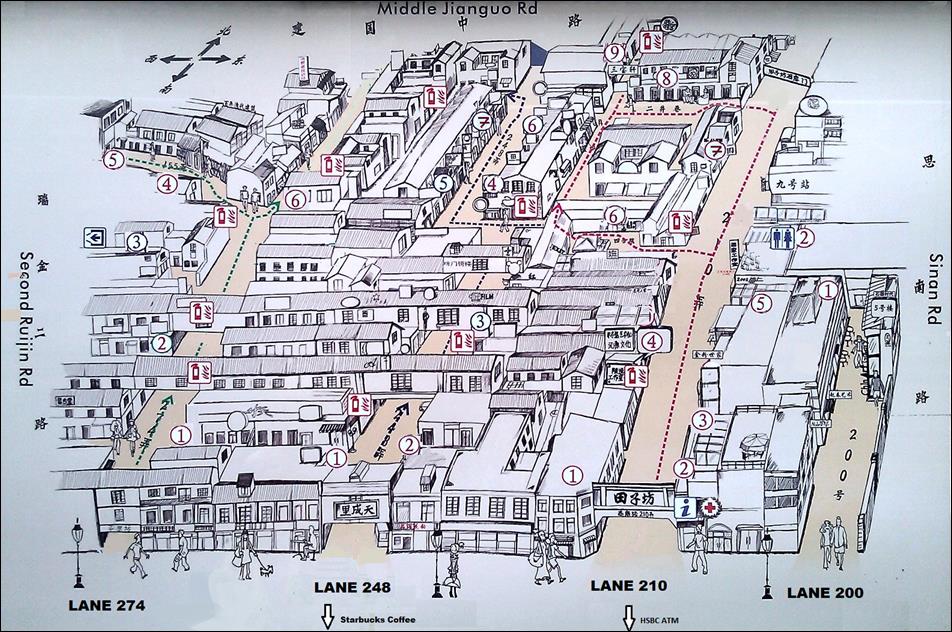
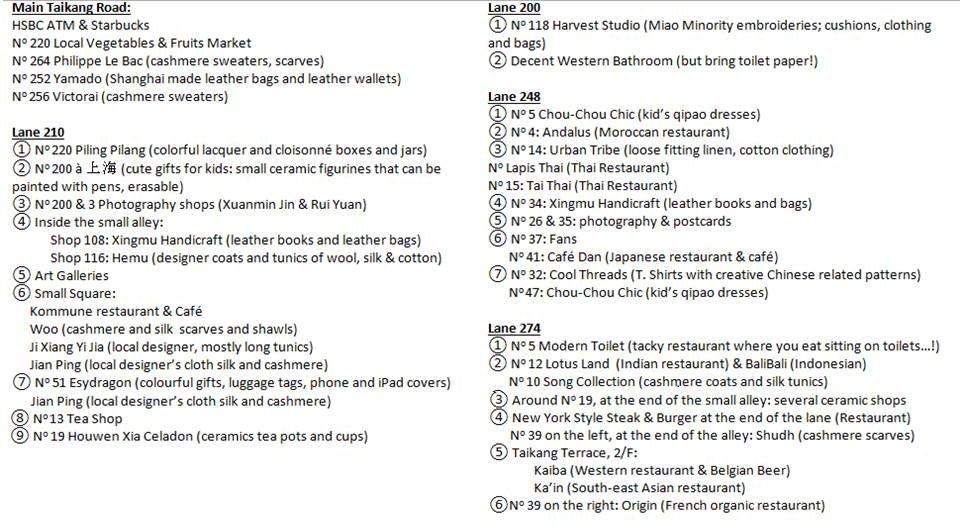
When shopping in foreign lands it's all too easy to fall into overly expensive tourist traps. China is no exception. Let our China Host be your personal shopper, expertly navigating you to the best of Chinese shopping in Tianzifang and beyond with inside knowledge, finesse, and – when necessary – bargaining guidance.
With displays from over 3,000 international artists, Art Basel Hong Kong – taking place March 15-17, 2015 – is set to not only be a dynamic juxtaposition of East and West, but a phenomenal platform for the emerging and established art world in Asia. The third annual Art Basel Hong Kong traces paintings, sculptures, installations, photographs, video and editioned works across 12 decades of art in six featured areas: Galleries, Insights, Discoveries, Encounters, Magazines and Film.
With half of the galleries coming from Asia and Asia Pacific, it’s an event that will immerse you in art, culture, history, and of course China.
To make this experience worth the trans-Pacific journey, consider experiencing the show in style with Imperial Tours on an 8-day Art Basel Hong Kong trip for two. Included in this package are private tours with art experts and specialists who will introduce you to some of the most prestigious galleries and private collections in Beijing’s 798 Art District, Shanghai’s world class contemporary art museums, and Hong Kong’s diverse art galleries, just to name a few.
One of the highlights of this trip is certainly the VIP pass to Art Basel Hong Kong with unlimited 2-day entry to the show and access to its collector’s lounge, Vernissage, and various fair events during which you can request one of our art experts to accompany you. Relax in between attending the fair and touring Hong Kong in a Harbor View Room at the beautiful Hong Kong Mandarin Oriental Hotel where a luxurious spa day or even a helicopter tour of the city can be added.
Our itinerary can be customized any way you like from simply adding an extra night, to exploring a lesser known part of the Great Wall with the wall’s foremost historian, to having a private dim sum cooking lesson, to watching Hong Kong’s Symphony of Lights show while having a private dinner on an historic junk boat.
Please click here to view our Art Basel Hong Kong Itinerary. If you’d like to book this trip as is or have us customize it to suit your needs, please email to debora@imperialtours.net.
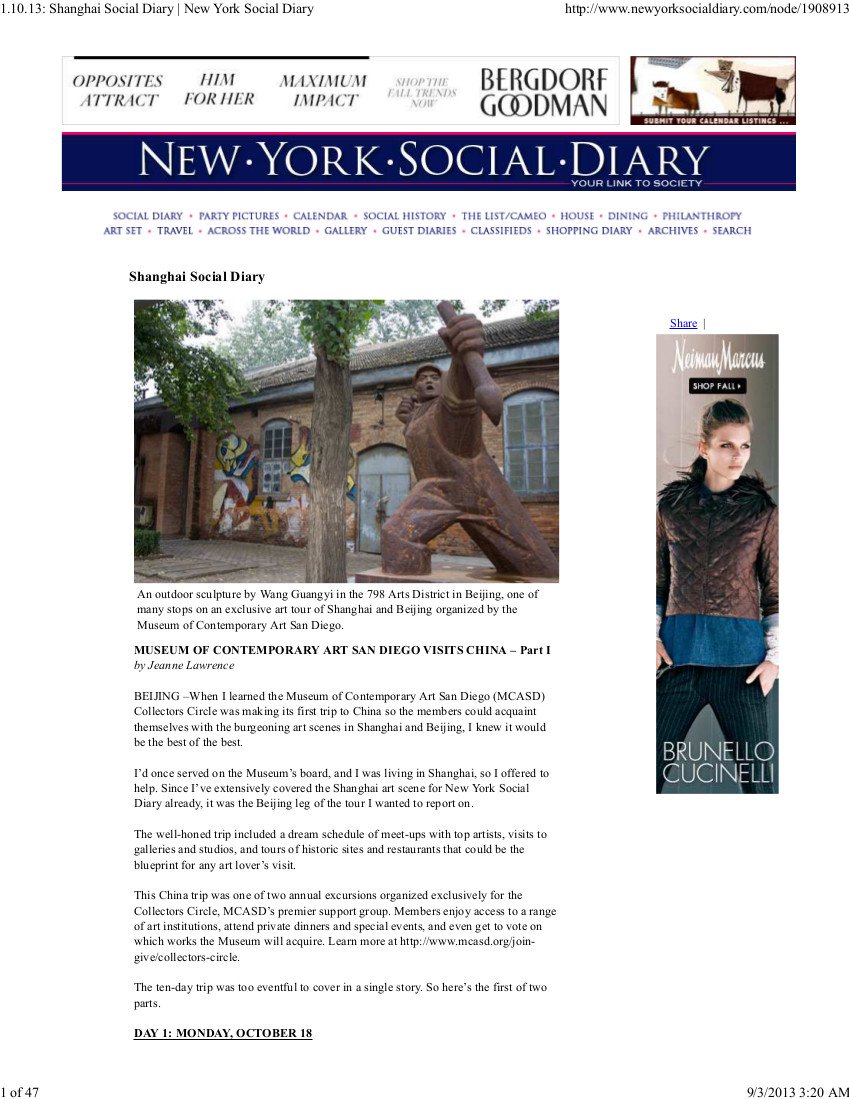
To carry on reading about this trip, please visit the New York Social Diary website.